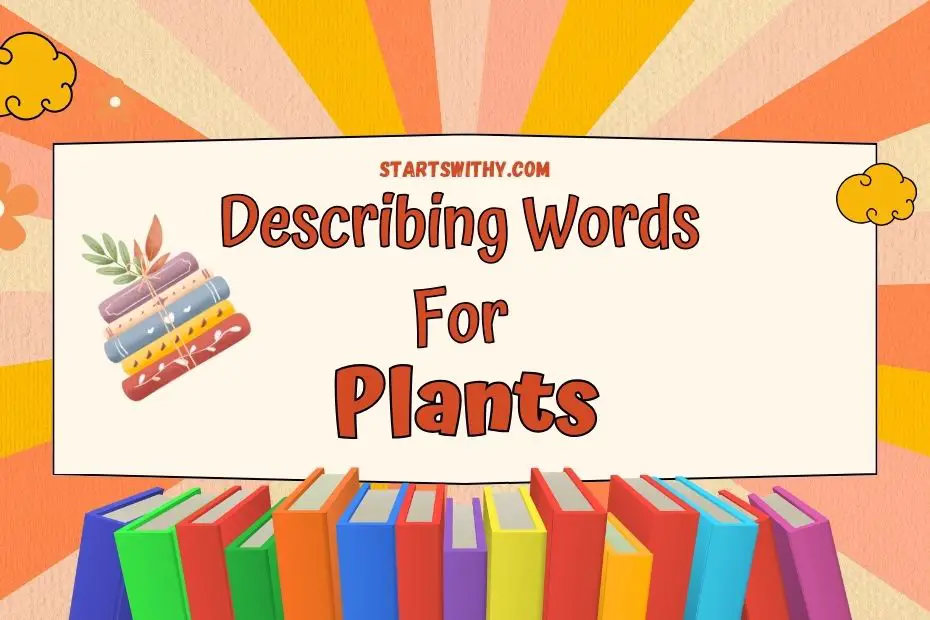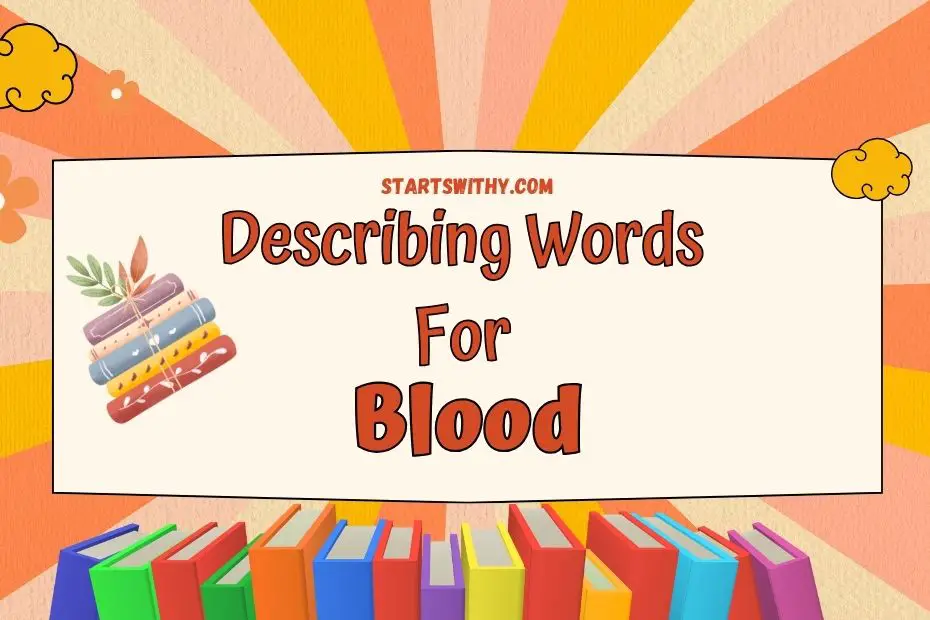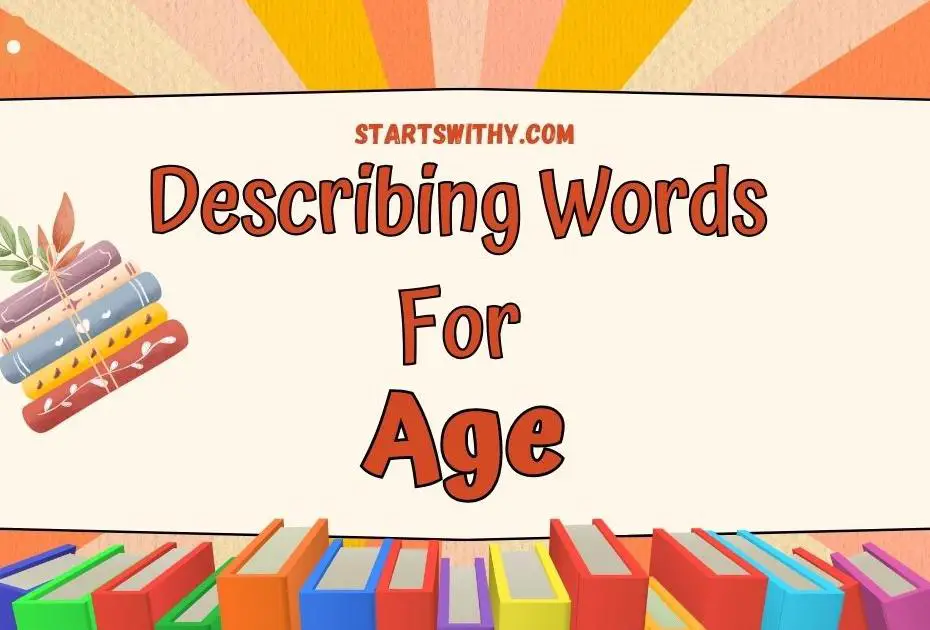When it comes to describing plants, there are a plethora of adjectives that can bring their beauty and uniqueness to life. From the vibrant colors of flowers to the towering height of trees, these descriptive words add depth and detail to our understanding of the plant kingdom. In this article, I’ll be sharing some of the most captivating adjectives for plants, along with examples that showcase their usage in context.
Whether you’re a nature enthusiast, a writer, or simply someone who appreciates the wonders of the natural world, having a diverse vocabulary to describe plants can enhance your experience and communication. From delicate and dainty to robust and resilient, each adjective paints a vivid picture of the plant’s characteristics. By exploring these descriptors, we can better appreciate the diversity and intricacies of the plant kingdom.
So, let’s dive into the world of adjectives for plants and discover the perfect words to capture the essence of these remarkable organisms. Whether you’re describing a blooming flower, a towering tree, or a lush fern, this article will equip you with the vocabulary you need to articulate the beauty and uniqueness of plants like never before.
How to Describe plants? – Different Scenarios
When it comes to describing plants, there are various scenarios to consider. Whether you’re an avid gardener, a nature enthusiast, or a student learning about plants, having a diverse vocabulary to effectively describe their characteristics is essential. Let’s explore different scenarios and discover the adjectives that can bring plants to life.
- Describing Flowers:
When describing flowers, you can use adjectives to capture their color, shape, scent, and size. Here are some examples:
- Vibrant: The vibrant petals of the red rose caught my attention.
- Delicate: The delicate white lily bloomed under the morning sun.
- Fragrant: The fragrant aroma of the jasmine filled the air.
- Petite: The petite daisy added a touch of charm to the garden.
- Describing Trees:
Describing trees can involve their height, leaf color, bark texture, and canopy shape. Here are a few examples:
- Majestic: The majestic oak stood tall, dominating the landscape.
- Lush: The lush green leaves of the maple tree provided shade on a sunny day.
- Rugged: The rugged bark of the pine tree was rough to the touch.
- Graceful: The graceful willow branches swayed in the gentle breeze.
- Describing Ferns:
Ferns have their unique qualities, with their feathery fronds and vibrant green hues. Here are some adjectives to describe ferns:
- Elegant: The elegant fronds of the fern unfurled with grace.
- Lush: The lush green foliage of the fern created a dense carpet on the forest floor.
- Intricate: The intricate patterns on the fern’s fronds were mesmerizing.
- Tropical: The tropical fern added a touch of exotic beauty to the garden.
- Describing Succulents:
- Succulent: The succulent leaves of the aloe vera plant were plump and full of moisture.
Describing Words for plants in English
When it comes to describing plants, there are a wide variety of adjectives that can help bring their beauty and uniqueness to life. Whether you’re teaching young children or simply looking to expand your vocabulary, these describing words for plants are sure to come in handy. Let’s explore some examples:
Flowers
Flowers are often admired for their vibrant colors and delicate petals. Here are some adjectives that can be used to describe different types of flowers:
- Bright: A flower that stands out with its vivid colors.
- Fragrant: A flower that emits a pleasant scent.
- Petite: A small and dainty flower.
- Elegant: A flower that exudes grace and beauty.
- Fascinating: A flower that captivates with its unique shape or pattern.
Trees
Trees can be majestic and provide shade and shelter. Here are some adjectives that can be used to describe different types of trees:
- Towering: A tall and imposing tree.
- Grand: A tree that commands attention and admiration.
- Leafy: A tree that is covered in lush foliage.
- Mighty: A strong and impressive tree.
- Noble: A tree that exudes dignity and importance.
Ferns
Ferns are known for their delicate foliage and ability to thrive in shady areas. Here are some adjectives that can be used to describe ferns:
- Graceful: A fern that moves with elegance and fluidity.
- Lacy: A fern that has intricate and delicate fronds.
- Fresh: A fern that brings a sense of renewal and vitality.
- Enchanting: A fern that captivates with its ethereal beauty.
- Thriving: A fern that flourishes and grows well in its environment.
Succulents
Succulents are popular for their ability to store water and their unique shapes and textures. Here are some adjectives that can be used to describe succulents:
- Plump: A succulent that is full and fleshy.
- Juicy: A succulent that looks like it’s bursting with moisture.
- Sculptural: A succulent with interesting and artistic shapes.
- Hardy: A succulent that is tough and resilient.
- Low-maintenance: A succulent that requires minimal care.
Adjectives for plants
As a plant enthusiast, I am always fascinated by the diverse and beautiful world of flora. Describing plants using the right adjectives can help bring their unique characteristics to life. In this section, I will share some positive and negative adjectives that you can use to describe plants, along with example sentences to illustrate their usage. Let’s dive in!
Positive Adjectives for Plants
When it comes to describing plants, positive adjectives can help paint a vivid picture of their beauty and appeal. Here are 12 examples of positive adjectives you can use:
| Adjective | Definition | Example Sentence |
|---|---|---|
| Vibrant | Full of life and color | The garden is filled with vibrant flowers. |
| Delicate | Fragile and dainty | The delicate petals of the rose look stunning. |
| Majestic | Grand and impressive | The towering oak tree looks majestic in the forest. |
| Lush | Luxuriant and thriving | The tropical rainforest is filled with lush vegetation. |
| Elegant | Graceful and refined | The orchid’s elegant blooms add beauty to the room. |
| Magnificent | Extraordinary and awe-inspiring | The waterfall surrounded by lush greenery is magnificent. |
| Charming | Attractive and delightful | The cherry blossoms create a charming scene in the park. |
| Exquisite | Beautifully intricate and delicate | The intricate patterns on the fern’s leaves are exquisite. |
| Pristine | Pure and unspoiled | The snow-covered landscape looks pristine and peaceful. |
| Intriguing | Fascinating and captivating | The carnivorous plant’s unique design is intriguing. |
| Fragrant | Pleasant-smelling | The jasmine flowers spread a fragrant aroma in the garden. |
| Wholesome | Healthy and wholesome | The organic vegetables are known for their wholesome taste. |
Now it’s time to get familiar with some negative adjectives for plants.
Negative Adjectives for Plants
While we often celebrate the beauty of plants, there are times when negative adjectives can be used to describe certain characteristics. Here are 5 examples of negative adjectives you can use:
| Adjective | Definition | Example Sentence |
|---|---|---|
| Withered | Shriveled and dried-up | The withered leaves indicated a lack of water. |
| Thorny | Covered in sharp, prickly spikes | Be cautious when handling the thorny cactus. |
| Invasive | Spreading aggressively and taking over other plants | The invasive vine quickly overtook the garden. |
| Prickly | Covered in sharp, pointy spines | The prickly pear cactus requires careful handling. |
| Diseased | Affected by a plant ailment or illness | The diseased leaves were a result of a fungal infection. |
Remember, when using negative adjectives, it’s important to provide context and explanations to avoid misinterpretation.
Synonyms and Antonyms with Example Sentences
Synonyms for plants
When it comes to finding the right words to describe plants, it can be helpful to have a wide range of synonyms at your disposal. Synonyms are words that have similar meanings to the original word, but with a slightly different nuance. Let’s explore some synonyms for plants:
| Word | Synonyms |
|---|---|
| Plant | Flora, vegetation, foliage |
| Flower | Blossom, bloom, petal |
| Tree | Woodland, timber, shrubbery |
| Fern | Frond, leafy plant, pteridophyte |
| Succulent | Cactus, agave, aloe vera |
Example sentences:
- The garden is filled with flora of all colors and shapes.
- The blossom of the rose is captivating with its velvety petals.
- The towering woodland provides shade and shelter for small animals.
- The ferns in the forest create a lush, green carpet on the forest floor.
- This succulent plant doesn’t require much water and is easy to care for.
Antonyms for plants
While it’s important to highlight the positive aspects of plants, there are also antonyms available to describe plants with negative traits. Antonyms are words that have opposite meanings to the original word. Here are some antonyms for plants:
| Word | Antonyms |
|---|---|
| Plant | Weed, pest, nuisance |
| Flower | Withered, faded, wilted |
| Tree | Stump, barren, lifeless |
| Fern | Sparse, dying, desolate |
| Succulent | Dry, shriveled, unhealthy |
Example sentences:
- The garden was overrun by weeds, choking the beautiful flowers.
- The withered flower petals fell to the ground, signaling the end of summer.
- The stump served as a reminder of the majestic tree that once stood tall.
- The sparse ferns struggled to survive in the harsh conditions.
- This dry succulent needs a little water to regain its plumpness.
By having a variety of synonyms and antonyms at your disposal, you can effectively describe plants in a way that captures their unique qualities and characteristics. Remember to choose the words that best convey the desired message and context.
Conclusion
Descriptive adjectives play a crucial role in capturing the essence and beauty of plants. Throughout this article, we have explored various scenarios for describing plants, including flowers, trees, ferns, and succulents. By using positive adjectives like vibrant, delicate, majestic, lush, elegant, and succulent, we can paint a vivid picture of their unique qualities. Additionally, we have learned synonyms for plants such as flora, vegetation, foliage, blossom, bloom, petal, woodland, timber, shrubbery, frond, leafy plant, pteridophyte, cactus, agave, and aloe vera.
While negative adjectives like withered, thorny, invasive, prickly, and diseased exist, it is essential to provide context and explanations when using them. By doing so, we can avoid misinterpretation and ensure that our message is conveyed accurately. We have also explored antonyms for plants, including weed, pest, nuisance, withered, faded, wilted, stump, barren, lifeless, sparse, dying, desolate, dry, shriveled, and unhealthy.
Choosing the right words is crucial when describing plants. By using descriptive adjectives effectively, we can bring their beauty to life and create a meaningful connection with our readers. So, let’s continue to explore the vast world of plant adjectives and enhance our descriptions with precision and creativity.



